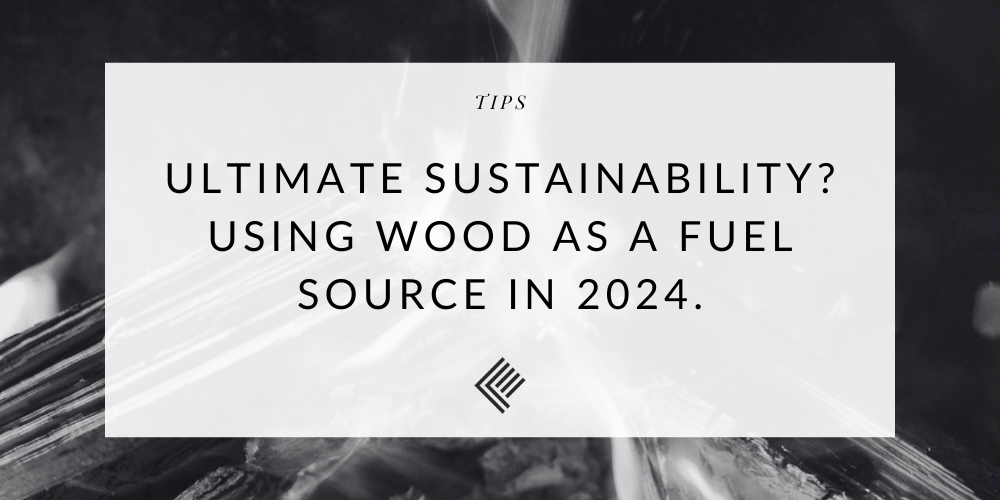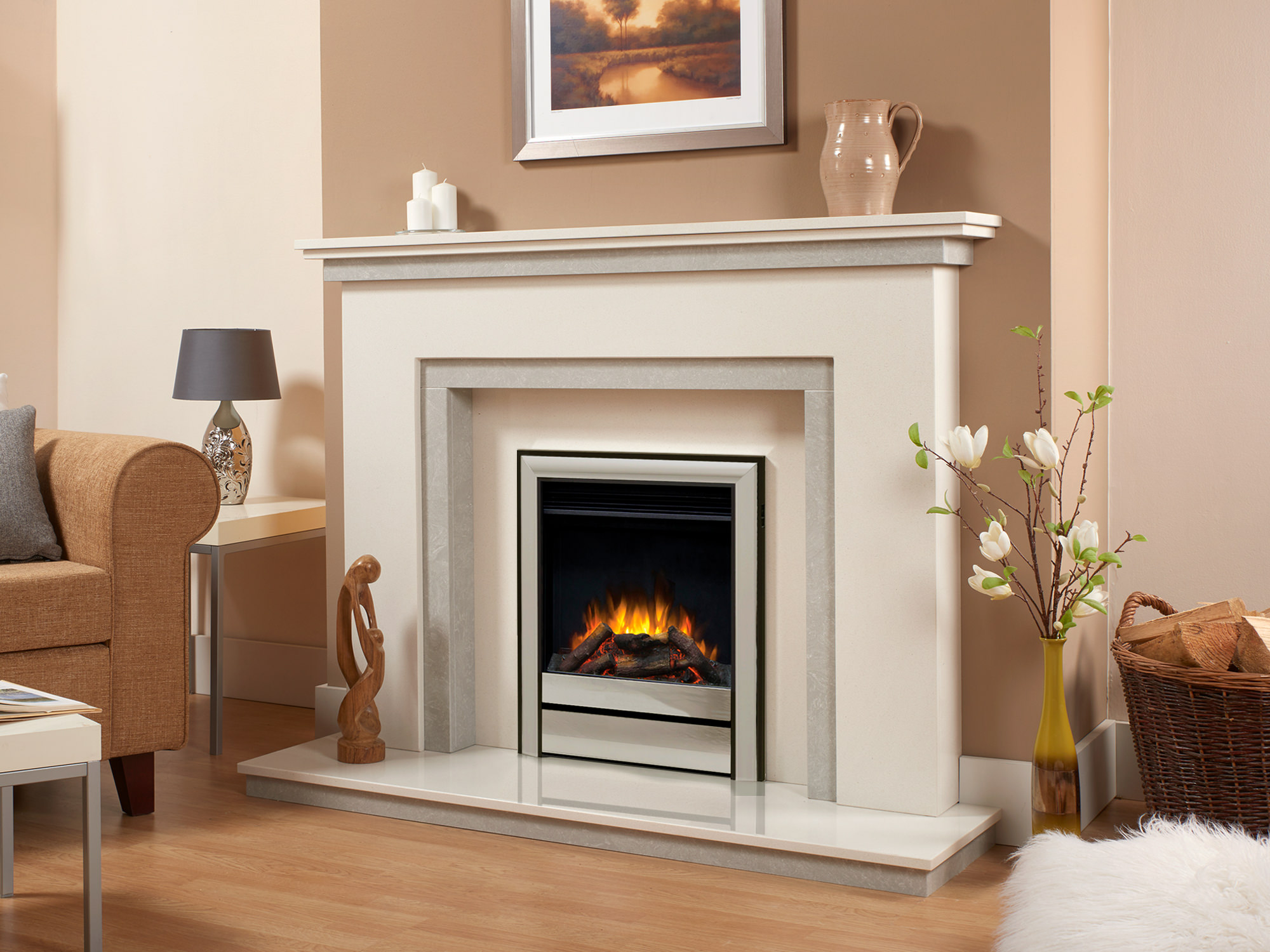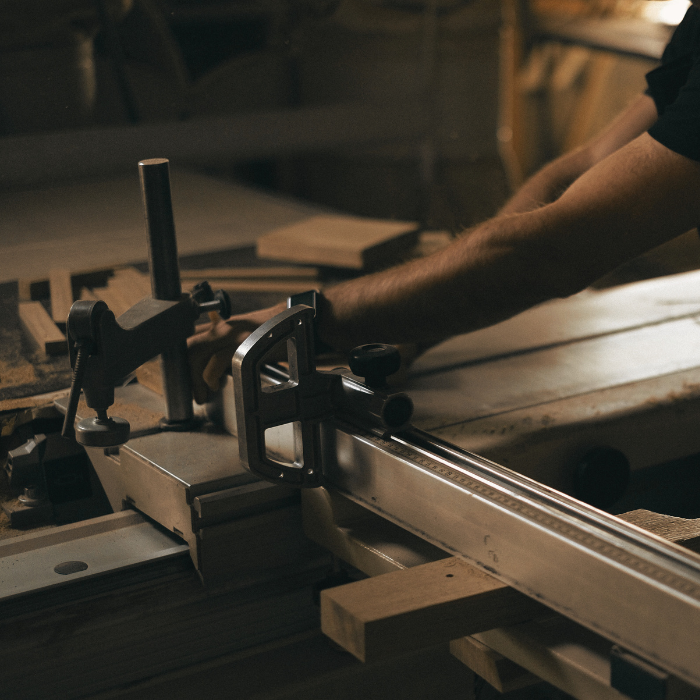
Table of Contents
Using wood as a fuel source is handy, but is it the most sustainable, eco-friendly way to heat your home? The answer is yes and also no. Nothing is straightforward when you’re looking at sustainability and planet-friendly methods of heating your home.
Let’s start with some facts – unlike coal, oil and natural gas, wood is not a fossil fuel. But that doesn’t make wood CO2 neutral – decomposing trees give off carbon dioxide, and so does burning wood in your fireplace, wood-burning stove or fire pit.
So, yes, wood is sustainable; we would even go as far as to say that wood and, in this case, logs are among the most sustainable and environmentally friendly materials available. Wood’s top marks for eco-friendly sustainability are because it can absorb carbon dioxide while growing, is adaptable as a product, is a source of biofuel, and is recyclable. If you replace every tree that is felled as part of a sustainable program, the wood produced is as sustainable as it can possibly be.
Here’s a little bit of science that you might find interesting….
Photo by Lukasz Szmigiel on Unsplash
Using wood as a fuel source, how sustainable is it?
As trees grow, water moves up the trunk, capturing carbon dioxide (CO2) from the air as it travels. The water and carbon dioxide combine with sunlight in the leaves, and a process called photosynthesis happens. The photosynthesis process swallows up carbon dioxide, releases oxygen and produces sugars (carbohydrates). The sugars move down the trunk of the tree and convert into wood.
A tree can take 20-30 years to reach maturity; the growth rate depends on the species and where you plant it, plus several environmental factors. However, some trees, like the magnificent Weeping Willow, grow incredibly fast, with most willows reaching between 15-20 ft within five years.
While you can burn willow, it’s not a great log to burn as it requires seasoning and when seasoned, it burns quickly without omitting much heat. Now you know the science, here’s some practical advice from the UK Forestry Commission.
Photo by Timothy Eberly on Unsplash
How to choose logs for sustainable warmth
When choosing wood for burning, two factors affect the overall net calorific value (CV) when it comes to available heat per unit (volume) of fuel. Let’s look at moisture value first and then wood density.
Wood’s moisture content has the greatest effect on its calorific value. Any moisture in the timber should ideally evaporate or dry out before the wood burns. Drying out will reduce the energy released as useful heat (as opposed to steaming up the chimney and smoking out your room). Logs that aren’t 100% dry will result in a smouldering fire that creates lots of tars, smoke and soot. Tar is corrosive and will eventually damage the lining of the flue, increasing the possibility of a fire in the chimney.
Also, wet/green logs will blacken glass in wood-burning stoves even if the stove has stay-clean glass. Well-seasoned logs have approximately twice the CV of green or unseasoned logs. If you are planning on using wood as a fuel source, make sure you use dried/seasoned wood whenever possible, either by buying it dry or buying green logs and drying them yourself.
How to check if your logs are well-seasoned
You can tell if your logs are well-seasoned if they have radial cracks (fractures extending outward) on the exterior and the bark comes off easily; these are all signs of properly seasoned logs.
The smell of your logs changes as they dry. When wet or green, logs smell musty and probably have a pest infestation. Dry wood smells clean and pleasant, the colour changes as the wood dries, and the log might split as it loses moisture; you should expect this to happen and use it as a sign the logs are ready for burning. A useful thing to know about when choosing your logs is wood density.
As you continue to use wood as a fuel source, you’ll learn the signs of properly seasoned logs, and picking them will become second nature!
How the density of wood affects your logs
When buying logs, knowing what to buy is an important issue, and that is where familiarity with wood density is useful. The retailer or seller will tell you whether the logs are from a mixture of hardwood or softwood tree species. The difference is that hardwoods (deciduous, broadleaved tree species like Oak and Ash) tend to be denser than softwoods (evergreen, coniferous species like Pine and Yew). You can read more about wood types in our blog about log storage.
Dense woods burn for longer than less-dense woods; this means you will need fewer logs to keep your log burner burning. If you buy wood by volume, you will receive more sustainable kilowatt hours (kWh) of heat from a cubic metre (m3) of hardwood than softwood with the same moisture content. Drying your own logs is an option; here’s our ’how to.’
How to dry your own logs for efficient use
Green logs (unseasoned) are considerably cheaper to buy than seasoned logs but will be heavier and require space to stack and dry before use. Timing is vital if you’re felling your own logs. Standing timber is at its driest in winter between November and early March.
Many manufacturers specify a moisture content of less than 20% because anything over this takes two years or more to air dry. Drying timber should be stacked on bearers (off the ground) in a sunny but breezy location, under an airy but waterproof cover. If possible, cross-cut logs should be split to less than 10 cm in diameter. Cuts at 10 cm allow moisture to easily move from the centre of the log to the surface. Once the logs are dry, it’s a good idea to bring them inside to settle for a few days before burning. We give detailed instructions and tips on how to build your own log store in our Log Storage Article.
Photo by Clay Banks on Unsplash
Using logs efficiently in open fires
Using wood as a fuel source in open fire is the traditional way to heat the home, and the current uptake in wood-burning stoves combined with oak fireplace beams has accelerated the demand for sustainable logs. However, unless you understand how to use your logs efficiently, burning logs can be an inefficient method of heating, especially if uncontrolled air flow takes the hot air from the fire up the chimney and then draws warm air in from the rest of the house as it goes. Read our article about fire building here.
Also, it’s worth remembering that when an open fire is not in use, the chimney can allow large amounts of cold air into the room. Always cap off your chimney when not in use to insulate against drafts. In some cases, it’s worth noting that an open fire, while cosy, may well increase other heating costs.
Using logs efficiently in log burners
Traditional log stoves provide radiant heat and offer an attractive, sustainable, renewable, low-carbon heat source that can be relatively cheap to run. Wood burners achieve significantly higher efficiencies than open fires, resulting in lower fuel requirements, not to mention less cleaning.
It’s a good idea to choose the smallest firebox area for your heat requirement ( we can help you with this), with controlled hot secondary air and ash retained in the base of the stove.
Running a stove with the doors open considerably reduces efficiency. An insulated chimney is essential, and whenever water vapour is in the chimney, the temperature at its outlet must be above 100˚C to evaporate the water and avoid condensation issues.
Noticeable smoke emission from the chimney is a sign of inefficient combustion; at this point, you should call your installer to rectify the problem.
Whilst not strictly using wood as a fuel source, there is alternative, sustainable materials you can burn in your log burner or open fire…
The following manufactured solid fuels are exempt from the Ready to Burn certification requirements:
- Coffee logs – logs made from old coffee grounds and pure sawdust.
- Olive logs – logs made from olive husk from the fruit of the olive tree.
- Wine logs – logs made from extracted grape seeds mixed with sawdust.
Fuels mostly made of wheat husks, miscanthus, bamboo, straw or compressed food (vegetables) waste mixed with sawdust are highly sustainable options and, in the case of olive logs and coffee logs, can add an aroma that fills the house. After all, bloggers often say the smell of fresh coffee can help you sell your home. Either way, it’s good to have options.
If you have enjoyed this article, why not read our other blogs – the blog about the history of the fireplace hearth is as interesting as it is informative, and the article titled ’The Lucky Wedding Chimney Sweep Tradition’ is amusing (at least we think so), and remember, we are always at hand to offer advice and help if you’re considering purchasing a wood-burning stove or fireplace surround.











